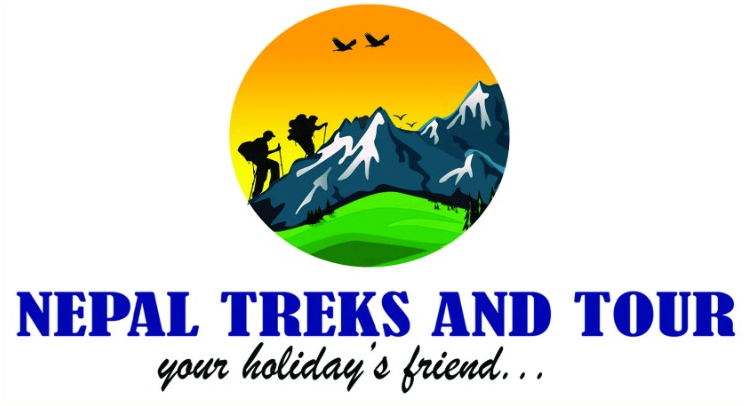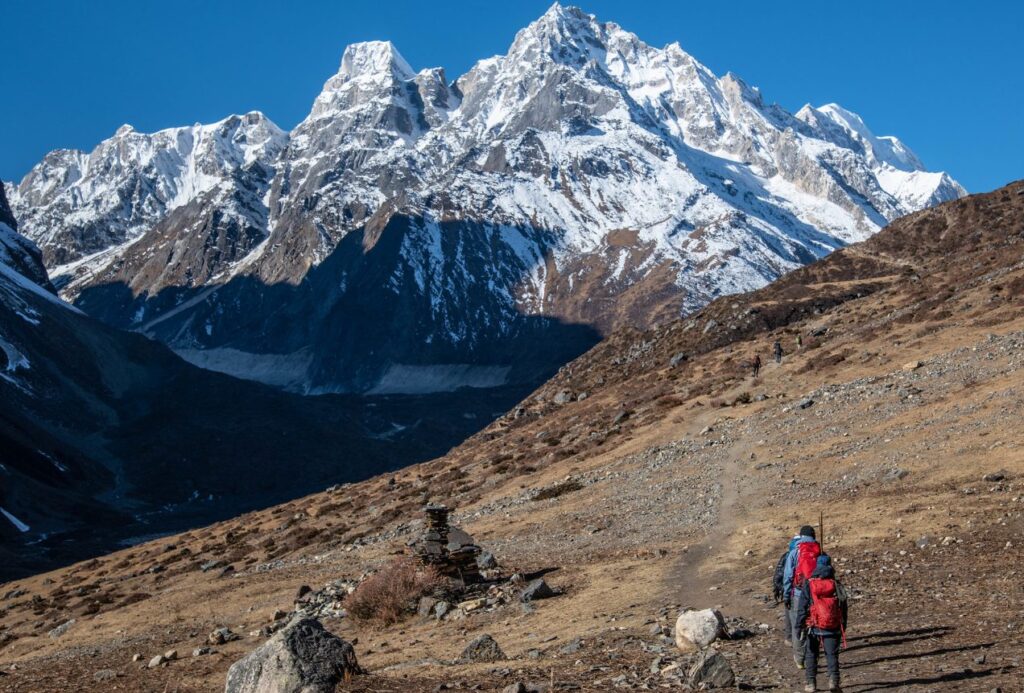Nepal is world-renowned for its iconic trekking routes like Everest Base Camp and the Annapurna Circuit, but beyond these popular trails lies a treasure trove of hidden Himalayan treks that offer a unique blend of adventure, culture, and serenity. These off-the-beaten-path trails take trekkers through remote valleys, ancient villages, sacred monasteries, and untouched landscapes, where the beauty of the Himalayas remains pristine and largely undiscovered. Perfect for those seeking solitude, cultural immersion, and a true sense of exploration, hidden Himalayan treks in Nepal reveal the authentic essence of the country’s mountainous regions, far from the crowds, yet rich with breathtaking panoramas, local traditions, and life-changing experiences.
Why Choose Hidden Himalayan Treks in Nepal?
Hidden Himalayan treks in Nepal are for those who want to step off the crowded trails and immerse themselves in the untouched beauty of the Himalayas. Unlike the popular trekking routes, these hidden journeys take you through remote valleys, ancient villages, unspoiled landscapes, and culturally rich regions where very few travelers venture. Choosing a hidden trek means enjoying raw wilderness, authentic encounters with indigenous communities, and breathtaking views of snow-capped peaks without the hustle of mass tourism.
These treks often blend adventure with cultural discovery—passing through Buddhist monasteries, age-old traditions, and trails that feel timeless. They offer solitude, serenity, and the chance to connect deeply with nature while challenging yourself in unexplored terrains. For true adventurers, hidden Himalayan treks in Nepal provide not just a physical journey but a soulful exploration of the less-discovered side of the Himalayas.
Top Hidden Himalayan Treks in Nepal
Certainly! Here’s a comprehensive guide to the top hidden Himalayan treks in Nepal, offering unique experiences away from the popular routes like Everest and Annapurna. These treks provide opportunities to immerse yourself in untouched landscapes, rich cultures, and serene environments.
Tsum Valley Trek (Manaslu Region)
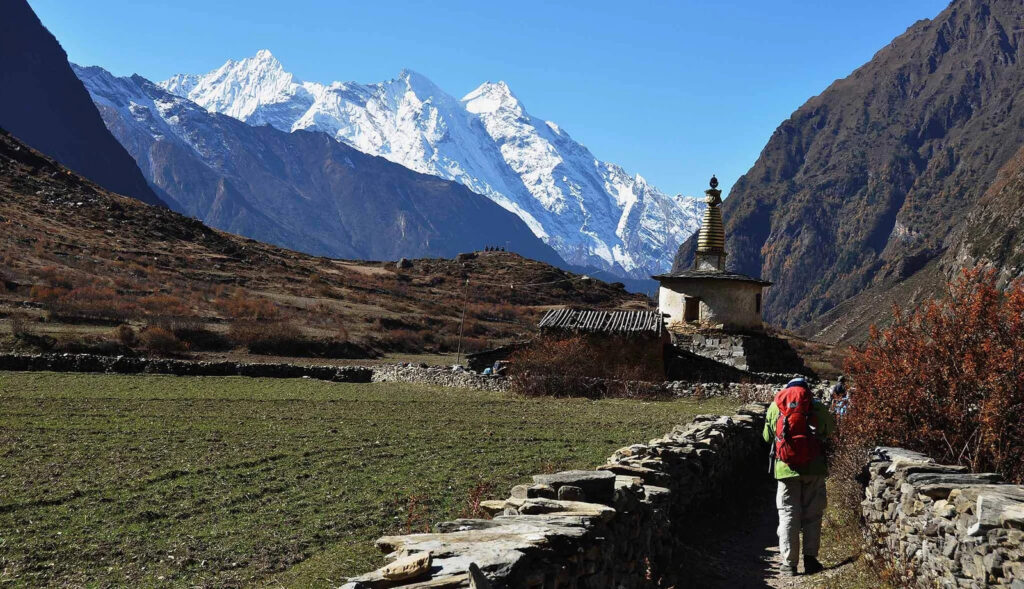
-
Duration: 10–14 days
-
Max Elevation: 3,700 m (12,139 ft)
-
Highlights: Ancient monasteries, Tibetan-influenced villages, spiritual ambiance
-
Best Time to Visit: March to May, September to November
-
Permits Required: Manaslu Restricted Area Permit, TIMS Card
Overview: The Tsum Valley, also known as the “Hidden Valley,” is a sacred Himalayan pilgrimage valley situated in the northern part of Gorkha District. This trek offers a deep cultural experience with visits to ancient monasteries and Tibetan-influenced villages. The valley remains relatively untouched by modern development, providing a serene trekking experience .
Phoksundo Lake Trek (Lower Dolpo)

-
Duration: 7–9 days
-
Max Elevation: 3,611 m (11,847 ft)
-
Highlights: Turquoise Phoksundo Lake, Bon Po culture, Shey Phoksundo National Park
-
Best Time to Visit: March to May, September to November
-
Permits Required: Dolpo Restricted Area Permit, TIMS Card
Overview: Phoksundo Lake, located in the Dolpo region, is one of Nepal’s most beautiful and remote destinations. The trek passes through the Shey Phoksundo National Park, offering views of the turquoise lake surrounded by snow-capped peaks. The area is rich in Bon Po culture, providing trekkers with a unique cultural experience .
Nar Phu Valley Trek (Annapurna Region)

-
Duration: 9–12 days
-
Max Elevation: 5,320 m (17,454 ft) at Kang La Pass
-
Highlights: Rugged terrain, ancient villages, Tibetan Buddhist culture
-
Best Time to Visit: March to May, September to November
-
Permits Required: Annapurna Conservation Area Permit, Nar Phu Valley Restricted Area Permit, TIMS Card
Overview: The Nar Phu Valley is a hidden gem located north of the Annapurna Circuit. The trek takes you through dramatic landscapes, ancient villages, and offers insights into Tibetan Buddhist culture. The Kang La Pass provides stunning views of the surrounding peaks .
Makalu Base Camp Trek
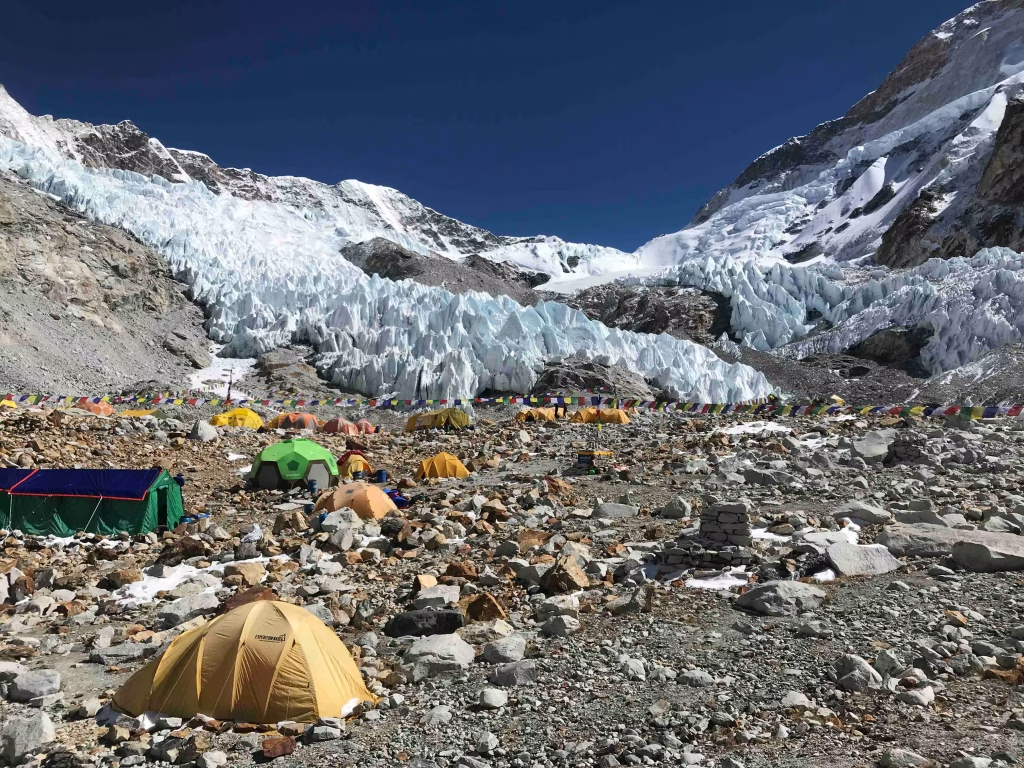
-
Duration: 18–22 days
-
Max Elevation: 5,800 m (19,029 ft) at Makalu Base Camp
-
Highlights: Remote wilderness, diverse ecosystems, stunning views of Makalu
-
Best Time to Visit: March to May, September to November
-
Permits Required: Makalu Barun National Park Permit, Makalu Restricted Area Permit, TIMS Card
Overview: The Makalu Base Camp Trek is one of Nepal’s most remote and challenging treks. It offers trekkers the opportunity to explore diverse ecosystems, from subtropical forests to alpine meadows, and provides stunning views of Mount Makalu, the world’s fifth-highest peak.
Rara Lake Trek (Northwestern Nepal)
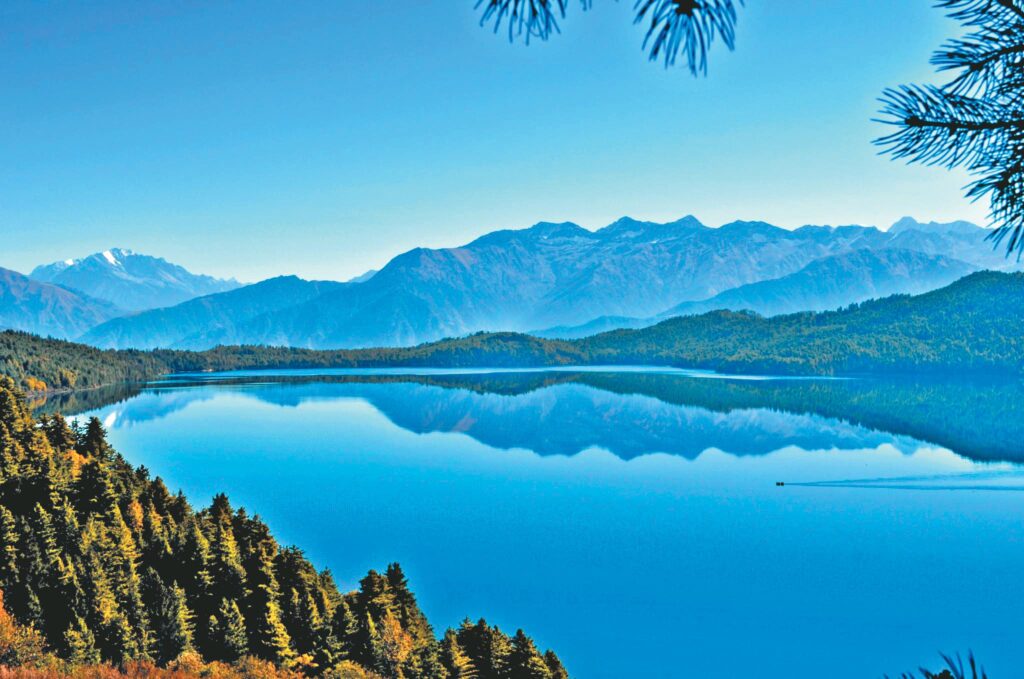
-
Duration: 8–10 days
-
Max Elevation: 3,048 m (10,000 ft)
-
Highlights: Rara Lake, remote villages, pristine nature
-
Best Time to Visit: March to May, September to November
-
Permits Required: Rara National Park Permit, TIMS Card
Overview: Rara Lake, located in the remote northwestern region of Nepal, is the largest lake in the country. The trek offers breathtaking views of the lake surrounded by snow-capped peaks and provides a glimpse into the lifestyle of the local communities .
Ganesh Himal Panorama Trek
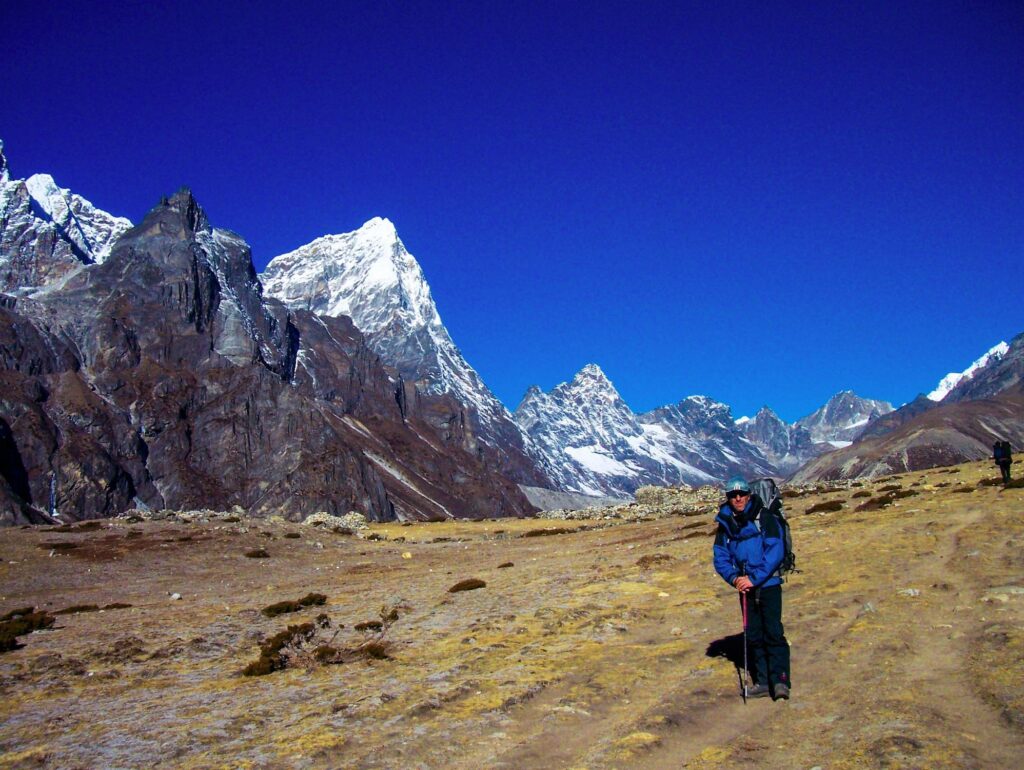
-
Duration: 12–15 days
-
Max Elevation: 3,800 m (12,467 ft)
-
Highlights: Views of Ganesh Himal, traditional Tamang villages, terraced fields
-
Best Time to Visit: March to May, September to November
-
Permits Required: Ganesh Himal Conservation Area Permit, TIMS Card
Overview: The Ganesh Himal Panorama Trek offers stunning views of the Ganesh Himal range and takes you through traditional Tamang villages. The trek is less frequented by tourists, providing a peaceful trekking experience .
Lamjung Himal Trek
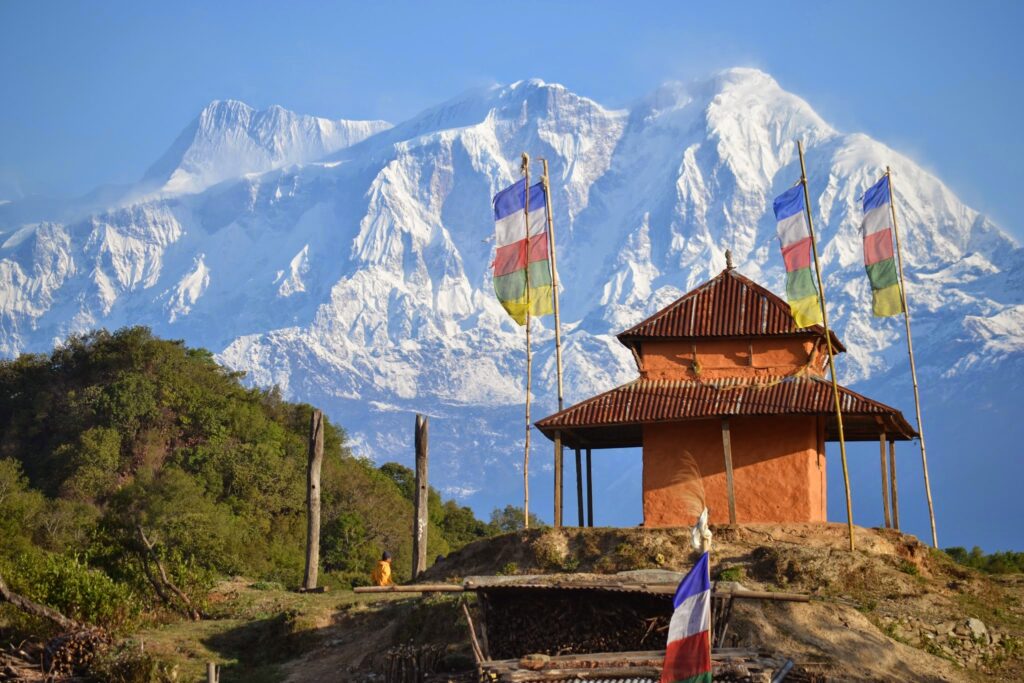
-
Duration: 10–12 days
-
Max Elevation: 4,000 m (13,123 ft)
-
Highlights: Ridge-top trails, views of Manaslu and Machhapuchhre, Gurung culture
-
Best Time to Visit: March to May, September to November
-
Permits Required: Annapurna Conservation Area Permit, TIMS Card
Overview: The Lamjung Himal Trek is an off-the-beaten-path route that offers ridge-top trails with spectacular views of peaks like Manaslu and Machhapuchhre. The trek passes through villages inhabited by the Gurung people, providing insights into their culture .
Mundhum Trail (Eastern Nepal)
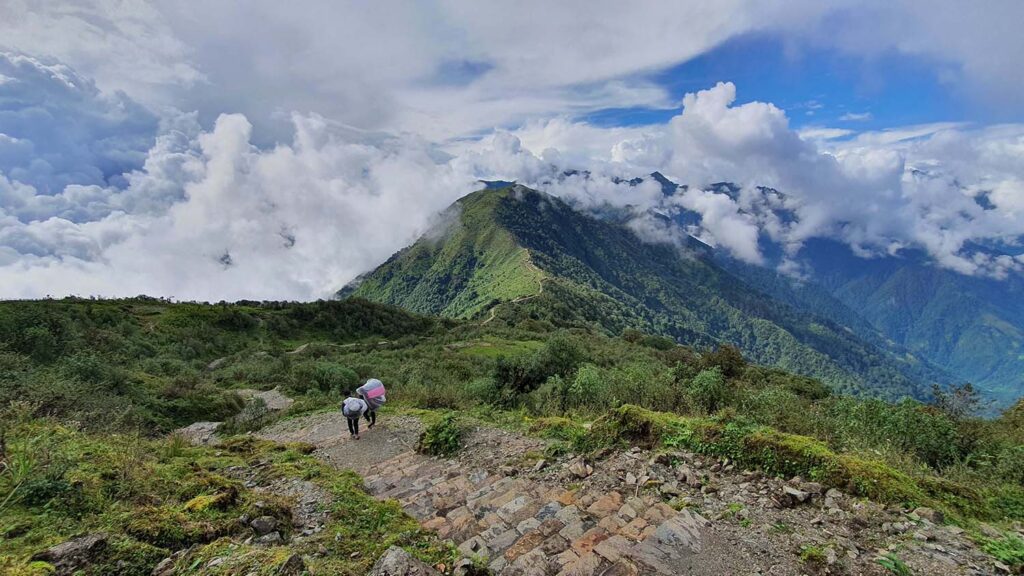
-
Duration: 10–14 days
-
Max Elevation: 3,500 m (11,483 ft)
-
Highlights: Sacred sites, Limbu culture, remote villages
-
Best Time to Visit: March to May, September to November
-
Permits Required: Ilam District Entry Permit, TIMS Card
Overview: The Mundhum Trail is a cultural trek in eastern Nepal that takes you through sacred sites and remote villages inhabited by the Limbu people. The trek offers a unique cultural experience and provides insights into the traditional lifestyle of the local communities .
Kori Trek (Near Annapurna)
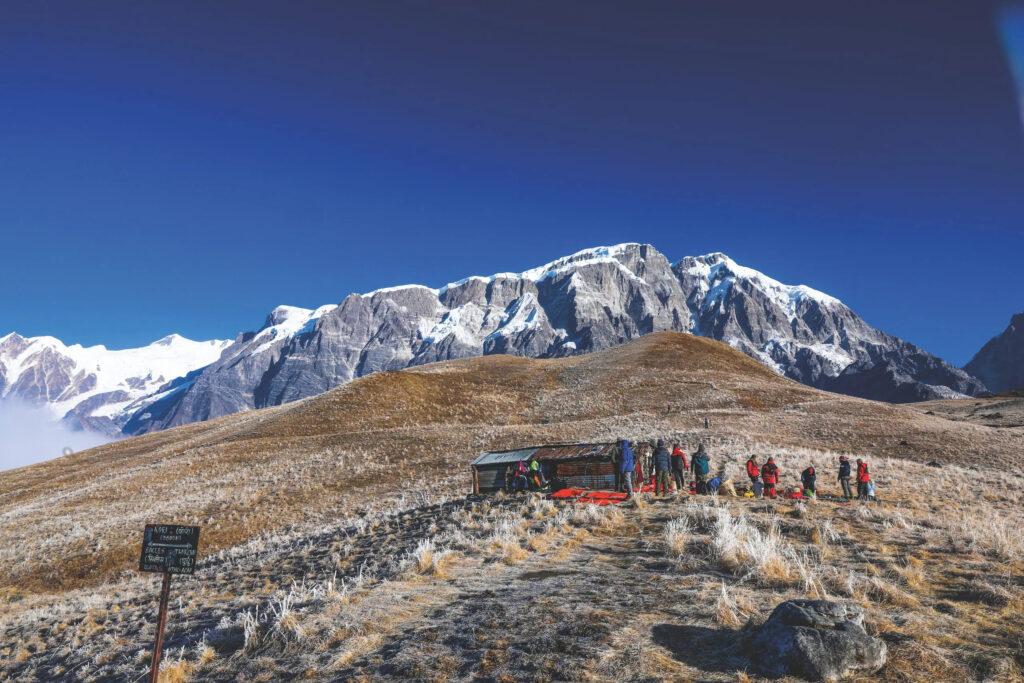
-
Duration: 7–9 days
-
Max Elevation: 3,000 m (9,843 ft)
-
Highlights: Scenic views, traditional villages, less crowded trails
-
Best Time to Visit: March to May, September to November
-
Permits Required: Annapurna Conservation Area Permit, TIMS Card
Overview: The Kori Trek is a scenic route near the Annapurna region that offers views of the surrounding peaks and takes you through traditional villages. The trek is less crowded, providing a peaceful trekking experience .
Khopra Danda Trek
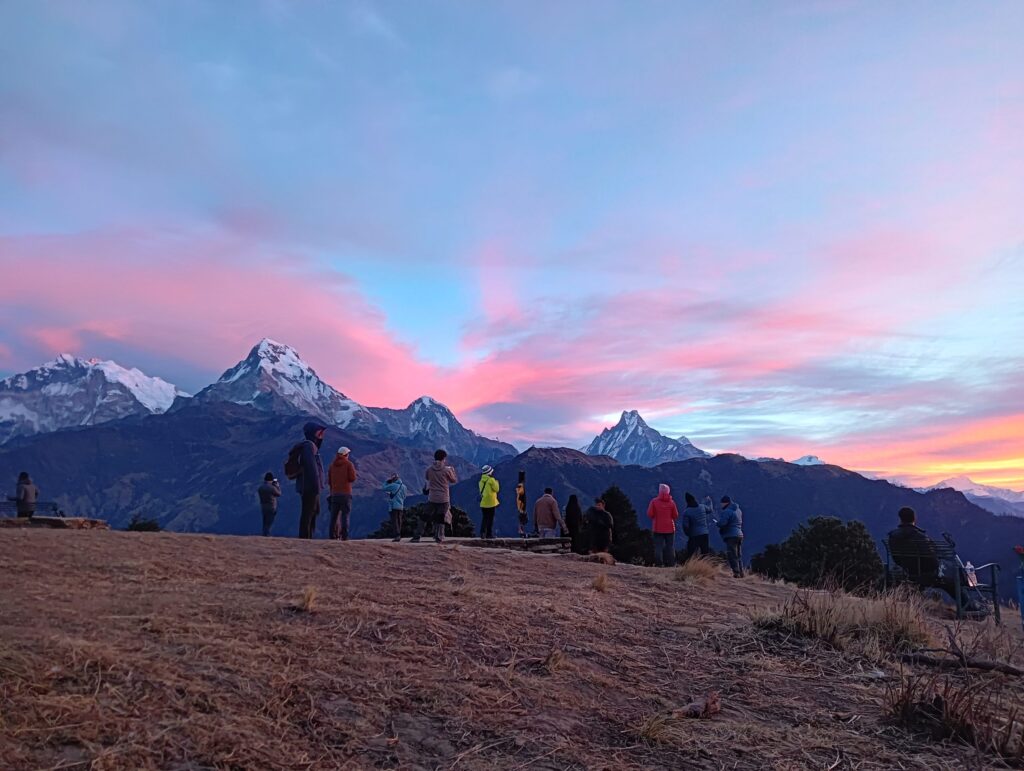
-
Duration: 8–10 days
-
Max Elevation: 3,660 m (12,008 ft)
-
Highlights: Ridge-top views, views of Annapurna South, less crowded trails
-
Best Time to Visit: March to May, September to November
-
Permits Required: Annapurna Conservation Area Permit, TIMS Card
Overview: The Khopra Danda Trek offers ridge-top views with fewer trekkers. The trek provides stunning views of Annapurna South and takes you through less-visited areas, offering a peaceful trekking experience .
Trekking Tips for Hidden Himalayan Routes
-
Permits: Many of these treks require special permits. It’s essential to arrange these in advance through a licensed trekking agency such as Nepal Treks and Tour.
-
Guides and Porters: Hiring a local guide and porter not only supports the local economy but also enriches your trekking experience with cultural insights.
-
Best Seasons: The ideal trekking seasons are spring (March to May) and autumn (September to November) when the weather is stable, and the trails are accessible.
-
Acclimatization: Given the high altitudes of some of these treks, proper acclimatization is crucial to prevent altitude sickness.
-
Packing: Pack light but ensure you have essential gear, including a good quality sleeping bag, trekking poles, and layered clothing suitable for varying temperatures.
Best Time to Explore Nepal’s Hidden Himalayan Treks
Nepal’s hidden Himalayan treks—like Tsum Valley, Upper Dolpo, Nar Phu Valley, and Makalu Base Camp—offer pristine landscapes, cultural immersion, and solitude away from crowded trails. Choosing the right season is essential for safety, optimal trekking conditions, and the best views of the Himalayas.
Spring (March – May)
Overview: Spring is considered the most popular trekking season across Nepal, including hidden regions. The weather is mild, skies are clear, and the trails begin to bloom with vibrant rhododendrons and alpine flowers.
Highlights:
-
Blooming rhododendron forests in Langtang and Manaslu regions.
-
Clear views of peaks such as Manaslu, Ganesh Himal, and Annapurna South.
-
Moderate temperatures make trekking comfortable during the day.
Advantages:
-
Stable weather with minimal rainfall in most areas.
-
Trails are generally dry and accessible.
-
Ideal for photography, as landscapes and cultural sites are at their most colorful.
Considerations:
-
Early spring (March) may still have patches of snow at higher passes.
-
Spring is slightly busier than other hidden trekking seasons but still quieter than Everest or Annapurna regions.
Autumn (September – November)
Overview: Autumn is the peak trekking season in Nepal. After the monsoon, the air is clean and crisp, giving trekkers unparalleled panoramic Himalayan views.
Highlights:
-
Snow-capped peaks are highly visible due to clear skies.
-
Moderate and stable weather conditions.
-
Vibrant post-monsoon landscapes with lush greenery.
Advantages:
-
Best visibility for photography.
-
Trails are dry and safe, reducing risks on high passes.
-
Pleasant temperatures in the lower and mid-hills; slightly colder at high altitudes.
Considerations:
-
Booking permits, flights, and teahouses may require advance planning due to higher demand, even in hidden regions.
Summer / Monsoon (June – August)
Overview: The summer months bring heavy rainfall to most of Nepal, but some regions—like Upper Dolpo, Mustang, and rain-shadow valleys—remain dry. These areas become prime trekking options for adventurous travelers.
Highlights:
-
Trekking through Upper Dolpo or Mustang provides unique experiences with fewer trekkers.
-
Lush greenery in forests and terraced hillsides.
-
Rivers and waterfalls are at their most dramatic.
Advantages:
-
Remote trails have very few visitors, offering true solitude.
-
Ideal for exploring rain-shadow regions.
Considerations:
-
Landslides, slippery trails, and leeches can be common.
-
High rainfall may affect flight schedules to remote airports like Juphal or Lukla.
-
Proper rain gear is mandatory.
Winter (December – February)
Overview: Winter is off-season for most high-altitude treks but is suitable for lower-altitude hidden treks. Temperatures are colder, and some high passes may be snowbound.
Highlights:
-
Clear skies provide excellent visibility.
-
Peaceful trails with almost no trekkers.
-
Frosty mornings and sparkling landscapes create a unique photographic experience.
Advantages:
-
Less crowded trails in accessible regions like Rara Lake or Ganesh Himal.
-
Winter trekking is perfect for trekkers who prefer solitude.
Considerations:
-
Extremely cold temperatures at high altitudes; daytime highs can be near freezing.
-
Snow can block higher passes like Larkya La, Kang La, or Makalu Base Camp.
-
Requires proper winter gear and experience in cold-weather trekking.
Summary Table
| Season | Best For | Highlights / Regions | Considerations |
|---|---|---|---|
| Spring | Scenic beauty, wildflowers, moderate trekking | Tsum Valley, Manaslu, Nar Phu | Some snow at high passes early March |
| Autumn | Peak visibility, panoramic views | Most hidden treks | Requires advance bookings |
| Summer | Off-the-beaten-path, rain-shadow regions | Upper Dolpo, Mustang | Heavy rainfall, landslides, slippery trails |
| Winter | Solitude, low-altitude trekking | Rara Lake, Ganesh Himal | Very cold, high passes may be closed |
Key Tips for Planning Your Hidden Trek
-
Check Local Conditions: Weather varies between regions; rain-shadow valleys like Mustang and Upper Dolpo are exceptions to monsoon rain.
-
Altitude Acclimatization: Hidden Himalayan treks often cross high passes above 5,000m; proper acclimatization is essential.
-
Permits & Guides: Restricted areas require special permits and licensed guides, regardless of season.
-
Gear Preparation: Bring layered clothing suitable for cold nights and variable daytime temperatures.
The best time to explore Nepal’s hidden Himalayan treks largely depends on your preferences:
-
For floral landscapes and moderate conditions, choose spring.
-
For crisp views and stable weather, autumn is ideal.
-
For solitude in remote rain-shadow regions, summer works best.
-
For peaceful low-altitude treks with winter landscapes, December–February can be rewarding.
Choosing the right season ensures safety, comfort, and the best visual experience for your hidden Himalayan adventure.
Preparing for the Hidden Himalayan Treks in Nepal
Hidden Himalayan treks—such as Tsum Valley, Upper Dolpo, Nar Phu, and Makalu Base Camp—offer a rare adventure into Nepal’s pristine landscapes. These treks are more remote and challenging than popular routes like Everest or Annapurna, so thorough preparation is essential to ensure a safe and enjoyable journey.
Physical Fitness & Training
Why it matters: Hidden Himalayan treks often involve long daily hikes, steep ascents, high-altitude passes, and rugged terrain. Being physically prepared reduces fatigue, lowers risk of injury, and helps with acclimatization.
Preparation Tips:
-
Cardio training: Walking, jogging, cycling, or stair climbing 3–5 times per week.
-
Strength training: Focus on legs, core, and back muscles for carrying backpacks.
-
Endurance hikes: Practice with weighted backpacks on uneven terrain.
-
Acclimatization: Train on higher altitude areas if possible, or simulate with stair climbing.
Trekking Gear for Nepal
Proper gear is crucial for hidden Himalayan treks, as many regions are remote, cold, and weather-variable.
Essential Gear:
-
Backpack (40–60L): Lightweight, with rain cover.
-
Trekking boots: Waterproof, durable, and well-broken-in.
-
Clothing layers: Moisture-wicking base layers, fleece mid-layers, and down jackets for high altitudes.
-
Rain gear: Jacket and pants for sudden showers.
-
Sleeping bag: Rated to -10°C or lower for higher passes.
-
Trekking poles: Reduces knee strain and improves stability.
-
Water purification: Tablets, filter, or UV purifier.
-
Headlamp and spare batteries
Optional: Sunglasses, sunscreen, gloves, gaiters, camera, and trekking map.
Acclimatization & Altitude Awareness
Many hidden Himalayan treks cross passes above 5,000 meters, making altitude sickness a real risk.
Tips to Prevent Altitude Sickness:
-
Ascend slowly: Follow the “climb high, sleep low” principle.
-
Stay hydrated: Drink at least 3–4 liters of water daily.
-
Avoid alcohol and smoking: Both increase dehydration and altitude risk.
-
Know the symptoms: Headache, nausea, dizziness, and shortness of breath.
-
Carry medication: Diamox can be considered after consulting a doctor.
Permits & Documentation
Most hidden Himalayan regions require special permits:
| Trek | Permits Required |
|---|---|
| Tsum Valley | Manaslu Restricted Area Permit, TIMS Card |
| Upper Dolpo | Dolpo Restricted Area Permit, TIMS Card |
| Nar Phu Valley | Nar Phu Restricted Area Permit, Annapurna Conservation Area Permit, TIMS Card |
| Makalu Base Camp | Makalu Barun National Park Permit, Restricted Area Permit, TIMS Card |
Tip: Always carry photocopies of your passport, permits, and trekking insurance. Nepal Treks and Tour can arrange all permits and guide requirements.
Local Guides & Porters
-
Guides: Required for restricted regions; enhance your experience with cultural insights, navigation, and safety.
-
Porters: Recommended to carry heavy loads, especially for longer treks.
-
Benefits: Supports local economy, ensures safety, and enriches cultural understanding.
Health & Safety Precautions
-
Vaccinations: Hepatitis A & B, Typhoid, Tetanus, and routine immunizations.
-
Travel insurance: Must cover trekking at high altitudes and emergency evacuation.
-
Emergency plans: Know nearest medical facilities and helicopter evacuation points.
-
Weather awareness: Mountain weather changes rapidly; always check daily forecasts.
Nutrition & Hydration
-
High-energy snacks: Nuts, energy bars, chocolate, and dried fruits.
-
Local meals: Dal Bhat, noodles, soups, and vegetables for sustenance.
-
Hydration: Purified water or boiled water; avoid untreated water from streams.
Cultural Preparation
-
Learn basic Nepali phrases: Greetings and polite expressions go a long way.
-
Respect local customs: Dress modestly, follow monastery etiquette, and ask before photographing people.
-
Responsible tourism: Minimize plastic use and support local businesses along the trek.
Mental Preparation
Hidden Himalayan treks are remote and less developed. Trekkers should be prepared for:
-
Long hours of walking on rugged trails.
-
Limited internet or mobile connectivity.
-
Basic teahouse or camping facilities in remote areas.
-
Self-reliance and flexibility in unexpected situations.
Preparation is the key to enjoying Nepal’s hidden Himalayan treks safely and comfortably. Physical fitness, proper gear, acclimatization, permits, local guides, and cultural awareness all play crucial roles. With careful planning and expert guidance from Nepal Treks and Tour, these hidden trails transform into unforgettable adventures—offering breathtaking landscapes, rich culture, and the serenity of the untouched Himalayas.
Exploring the hidden Himalayan treks in Nepal is more than just a journey; it’s an immersion into the country’s untouched natural beauty, rich culture, and tranquil wilderness. These off-the-beaten-path trails offer a perfect escape from crowded tourist routes, allowing trekkers to experience remote valleys, ancient villages, sacred monasteries, and panoramic Himalayan vistas. Whether you seek adventure, spiritual enrichment, or peaceful solitude, these hidden trails promise unforgettable memories and authentic encounters with Nepal’s people and landscapes. With proper preparation, permits, and guidance from experienced operators like Nepal Treks and Tour, embarking on a hidden Himalayan trek ensures a safe, rewarding, and life-changing adventure.
Hidden Himalayan Treks in Nepal – FAQs
Q: What are the hidden Himalayan treks in Nepal?
A: Hidden Himalayan treks are less-explored trekking routes in Nepal that take you off the popular trails of Everest and Annapurna. These treks lead to remote valleys, culturally rich villages, and untouched landscapes, offering solitude, adventure, and authentic Himalayan experiences.
Q: Which are the most popular hidden Himalayan treks?
A: Some of the top hidden treks include:
-
Tsum Valley Trek – A sacred and spiritual valley in the Manaslu region.
-
Upper Dolpo Trek – Remote landscapes with Bon Po culture and Phoksundo Lake.
-
Nar Phu Valley Trek – Rugged terrain with Tibetan-style villages.
-
Makalu Base Camp Trek – Wilderness trek to the base of the 5th highest peak.
-
Rara Lake Trek – Scenic and peaceful trek to Nepal’s largest lake.
-
Ganesh Himal Panorama Trek – Lesser-known ridge-top trails with spectacular views.
Q: What is the best time to trek in the hidden Himalayan regions?
-
Spring (March–May): Mild weather, rhododendron blooms, and clear views.
-
Autumn (September–November): Peak trekking season, crisp skies, panoramic views.
-
Summer/Monsoon (June–August): Ideal for rain-shadow regions like Upper Dolpo or Mustang.
-
Winter (December–February): Suitable for lower-altitude treks like Rara Lake; higher passes may be snowbound.
Q: Do I need special permits for hidden Himalayan treks?
A: Yes, many hidden treks are in restricted areas. Required permits may include:
-
TIMS Card – Trekking Information Management System card.
-
Restricted Area Permits (RAP): For regions like Upper Dolpo, Tsum Valley, Nar Phu Valley, and Makalu.
-
Conservation Area Permits: Required for treks within national parks or conservation zones.
Tip: Nepal Treks and Tour can handle all permit arrangements.
Q: Do I need a guide or porter?
-
Guides: Required for restricted areas; highly recommended for navigation, safety, and cultural insights.
-
Porters: Helpful for carrying heavy gear, especially on longer treks.
-
Benefits: Enhance your safety, enrich cultural understanding, and support local communities.
Q: What level of fitness is required for hidden Himalayan treks?
A: These treks range from moderate to strenuous, depending on altitude and terrain. You should:
-
Be able to trek 4–8 hours per day.
-
Prepare for steep ascents and high-altitude passes.
-
Train in cardio, strength, and endurance before your trek.
Q: Are hidden Himalayan treks safe?
A: Yes, with proper preparation and guidance:
-
Trekkers should acclimatize properly to prevent altitude sickness.
-
Weather conditions can change rapidly; daily monitoring is essential.
-
Using licensed guides and porters improves safety and local knowledge.
-
Travel insurance covering high-altitude trekking and evacuation is strongly recommended.
Q: What kind of accommodations are available?
-
Teahouse Trekking: Most hidden treks offer basic teahouse lodges, providing meals and simple rooms.
-
Camping Treks: In very remote regions like Upper Dolpo or Makalu, camping may be required.
-
Facilities are basic, but the experience offers authentic Himalayan life.
Q: What should I pack for hidden Himalayan treks?
-
Clothing: Layered clothing suitable for variable temperatures.
-
Footwear: Waterproof trekking boots.
-
Gear: Sleeping bag, trekking poles, rain gear, headlamp, water purification.
-
Essentials: Sunscreen, sunglasses, first aid, personal medications, trekking map.
Q: Can beginners do hidden Himalayan treks?
-
Moderate-level hidden treks like Rara Lake or Ganesh Himal Panorama can be attempted by beginners with basic fitness.
-
Challenging treks like Upper Dolpo, Makalu Base Camp, or Nar Phu are recommended for experienced trekkers due to remoteness and high altitudes.
Q: How long do hidden Himalayan treks take?
-
Short treks: 7–10 days (e.g., Rara Lake, Lamjung Himal).
-
Moderate treks: 10–14 days (e.g., Tsum Valley, Nar Phu Valley).
-
Long treks: 18–25 days (e.g., Upper Dolpo, Makalu Base Camp, Kanchenjunga).
Q: Why choose hidden Himalayan treks over popular routes?
-
Avoid crowded trails and experience solitude and tranquility.
-
Discover unspoiled natural landscapes and cultural heritage.
-
Engage with local communities in remote villages.
-
Experience adventure, challenge, and authenticity beyond Everest or Annapurna.
If you need any further information, please feel free to contact us via email at [email protected] or by phone/WhatsApp at +977-9851013072.
